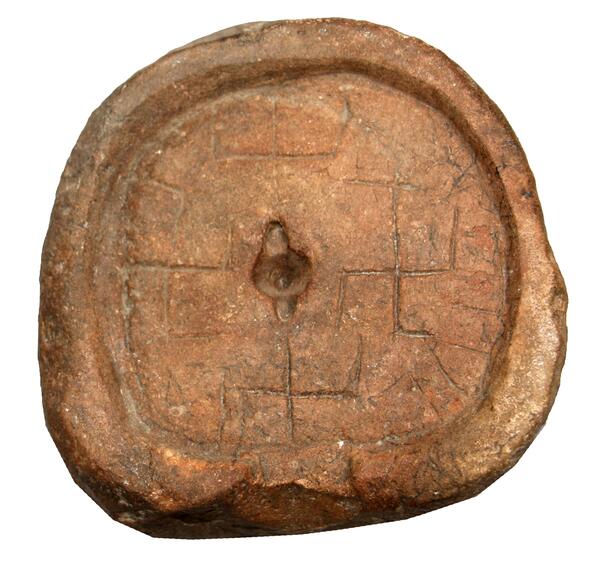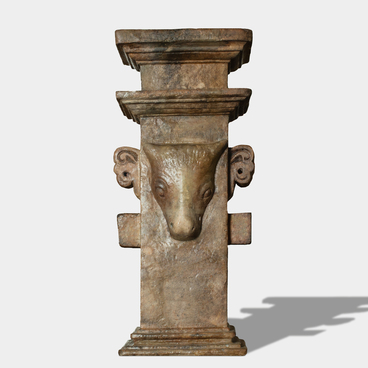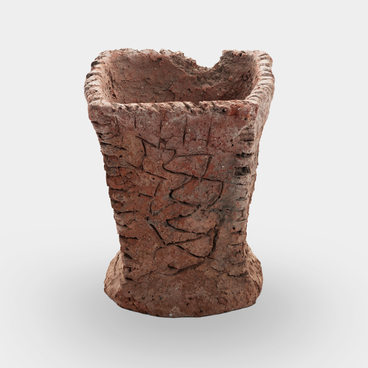All the finds that testify to the development of handicraft production in Tanais are of great interest to researchers. They confirm that trade played the key role in the city’s economy throughout its history. The Tanais Archaeological Museum-Reserve houses a foundry mold, a rather rare artifact that gives reason to believe that mirrors were produced in the city.
Stone carving was a painstaking process. Even if a foundry mold was not manufactured perfectly, the process required specific materials, tools, and an experienced carver. Each mold was unique, and it is impossible to find two exactly identical ones. The manufacturing of a mold required significant labor costs that could only be justified in the case of mass production.
The foundry mold on display was found during
archaeological excavations in Tanais in 1979. It was made of brown stone and
was used to cast a round bronze mirror with a loop in the center and a
decorative pattern on the reverse side. The mold has a rounded shape, with a
smooth working surface and a low edge to prevent the molten metal (bronze) from
flowing out of the mold. There is also a round recess in the stone, with an
additional recess in the center for the loop. Around the loop, there are four
solar symbols with their arms bent at a right angle in a clockwise direction.
The mold dates back to the Sarmatian period and undoubtedly proves that the
mirror belonged to the category of women’s accessories and was connected to
Sarmatian religious beliefs. An analysis of the decorative and magical
ornamentation can provide insight into the religious beliefs and practices of
the Sarmatians. The solar symbols on the foundry mold represent the sun and its
rotation, as well as the eternal movement of life, based on the cycle of death
(sunset) and rebirth (sunrise). The four symbols probably represent the four
cardinal directions. The number four also symbolizes the horses in the chariot
of the God of the Sun. In nomadic mythology, this symbol may also represent constant
movement in search of new pastures.


